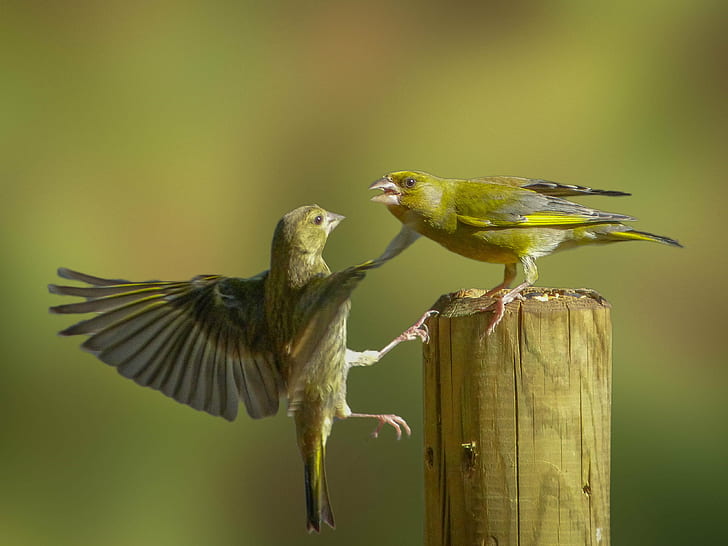Elegant Avian Delight: Exploring the Enigmatic Greenfinch
Within the realms of Europe, North Africa, and western Asia, the Greenfinch graces the skies as a delightful small to medium-sized bird species. This feathered wonder is recognized for its distinctive verdant plumage, earning it the fitting moniker of “Greenfinch.” A common presence in gardens and parks across its habitat, this avian gem exudes both charm and elegance.
Sporting a sturdy conical beak, the Greenfinch is adept at cracking open seeds and nuts—a skill that sustains its diet. Its vibrant body boasts an enchanting shade of green, punctuated by cheerful yellow accents adorning its wings and tail. In a subtle nuance, the females exhibit slightly more muted hues compared to their male counterparts.
Social by nature, Greenfinches often traverse the skies in flocks, a phenomenon especially pronounced during the winter months. Their nests find homes amidst trees and shrubs, with egg-laying activities commencing in the early bloom of spring.
The dietary preferences of the Greenfinch predominantly lean toward seeds and nuts, though they demonstrate versatility by incorporating insects and minuscule invertebrates into their menu. Their vocal prowess is underscored by cheerful, twittering melodies that fill the air, a harmonious symphony often gracing the spring and summer seasons.
Regrettably, some populations of Greenfinches have encountered the scourge of trichomonosis, a disease that compromises their ability to feed and swallow. This affliction has spurred conservation endeavors to safeguard these avian wonders and curtail the spread of this ailment, ensuring their continued presence in our shared natural tapestry.
The Greenfinch, with its vivid plumage and melodious trills, holds a special place in the hearts of bird enthusiasts and nature admirers alike. As it flits through gardens and parks, its presence resonates as a testament to the enchantment that dwells within the avian realm, beckoning us to appreciate the delicate balance of nature’s offerings.
Hits: 3









